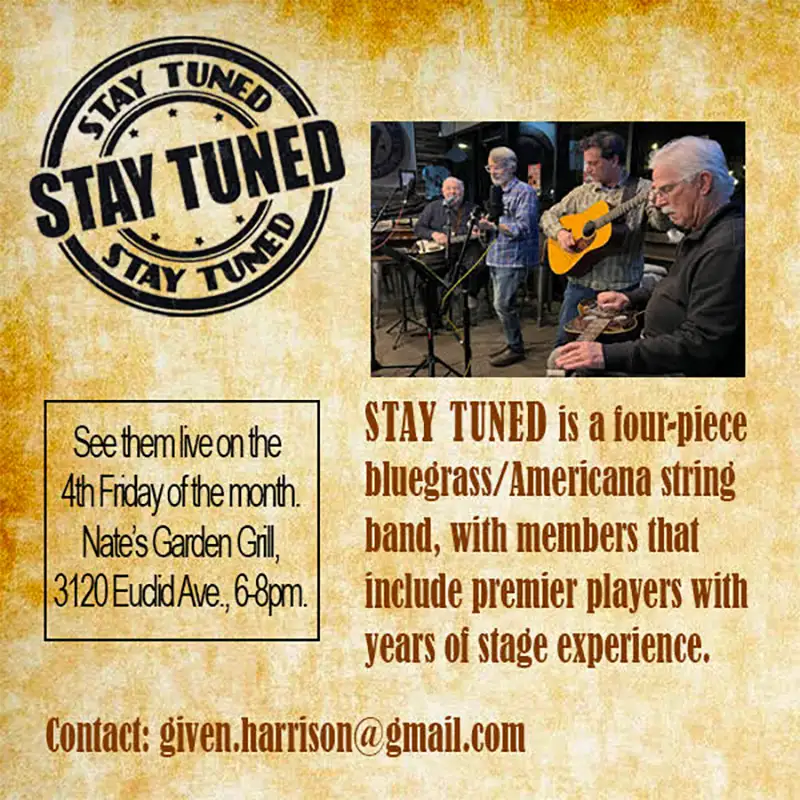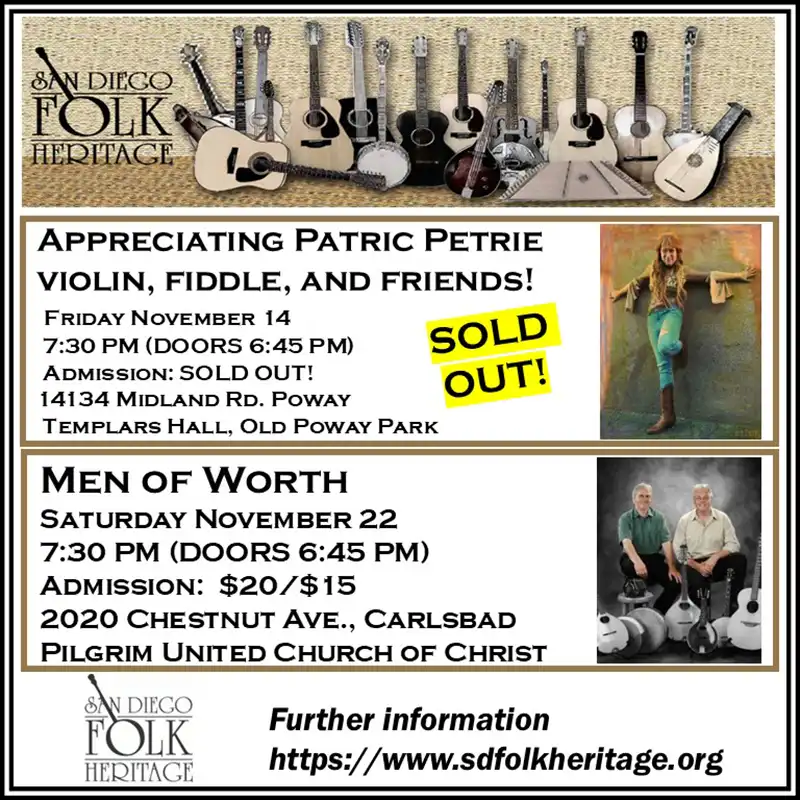Bluegrass Corner
SUMERGRASS: another great year!
Perfect weather, great music, jamming at all hours, top talent, good friends. What’s not to love about Summergrass 2019, which marks its 17th year? As I complete this column Summergrass is still going. Look for a full report with photos next month.
Bluegrass Music’s Trajectory—a music in motion. Surprisingly to many, bluegrass music is relatively new. It was founded in the 1940s by Bill Monroe with his seminal band Bill Monroe and His Bluegrass Boys. The music has come a long way over the past 80 years. Yet, interestingly, in core respects it also remains unchanged. Let’s take a look at how the music has both held its ground and evolved, and make some predictions about where it might be headed.
Bluegrass music originated as an amalgamation of Appalachian mountain music, imported British Isles fiddle music brought to the U.S. by immigrants, African-American blues influences, and some special magic stirred in by Bill Monroe. It emphasized virtuosity on acoustic instruments, three- and four-part “high lonesome” harmony singing, and notey, fast-paced presentations. The bands were made up of banjo, fiddle, guitar, mandolin, and upright bass. This new music quickly captured American audiences and could be heard on many radio stations, on early TV, and in many concerts and contexts.
In the 1950s the emergence of rock ‘n’ roll, Elvis and electrified instruments dealt bluegrass music a blow, “stealing” away many fans to this newer genre. An interesting note, though, is that Elvis released “That’s All Right”/”Blue Moon of Kentucky,” in 1954 with “Blue Moon of Kentucky,” a Bill Monroe song, on the B side consistently out-charting the A side. The rock ‘n’ roll movement led to two tracks for bluegrass. On the one hand the traditionalists dug in to support bluegrass in its original form. Today, there are many prominent bluegrass bands playing the music as Bill Monroe and Flatt and Scruggs did. Give a listen to Danny Paisley, Junior Sisk, or the Earls of Leicester and you will quickly hear that traditional bluegrass is alive and well.
On the other hand, musicians who had earned their chops in traditional bluegrass music began to push the music in new directions. Some pushed in search of commercial market share, some out of pure creativity, and some pursued a bit of both. This movement brought us the Newgrass Revival in the 1970s, which saw the rise of David Grissman and his “dawg” music: Old and in the Way with Jerry Garcia and others. This “newgrass” music still uses the traditional acoustic bluegrass instruments but definitely pushes the envelope. Newgrass garnered immediate success with the young generation who grew up in the ’60s and ’70s opposing the Vietnam War and who were seeking a new authenticity in all aspects of their lives, including in their music. Note that Old and in the Way remains among the top three all-time selling bluegrass albums.
This early progressive wave of bluegrass music then brought us Alison Kraus, Nickel Creek, and others who took the music even further, using lush arrangements, modern vocals, and instrumentations, generating great appeal to a broader audience. This next wave was and remains very popular. Note that Alison Kraus has won more Grammy awards than any other female vocalist, with Aretha Franklin a distant second.
Most recently, the progressive bluegrass movement has brought us Railroad Earth, Yonder Mountain String Band, Trampled by Turtles, Mumford and Sons, the Punch Brothers, and others performing at rock festivals, often using electrified instruments and typically presenting a jamming style of improvisational music. One can hear the progression of the music in these performers, many of whom learned their trade from Bill Monroe and the early pioneers but whose music now horrifies hard-core traditionalists. The Infamous Stringdusters encapsulate this movement in one band, having started as “Wheel Hoss,” then winning the IBMA Bluegrass Band of the Year with their early traditional releases, then deliberately moving away from the traditional to the experimental while still referencing bluegrass roots in their music.
Meanwhile, the traditionalist branch of the music has remained relatively unchanged, as younger generations are captured by its appeal and new bands take up the tradition. Give a listen to Flatt Lonesome to know that traditional bluegrass music is alive and well. There are now audiences for the traditional as well as the progressive with overlap for those who like both. This is healthy for the music, but can lead to some tension, particularly for those traditionalists who feel that these newcomers are diverting and diluting their music.
Where is our music headed? Eighty years of history tell us it is here to stay. The last official reports I saw indicates that 20 million or more Americans enjoy bluegrass music in one form or another, and its appeal continues to grow. The older generation of traditionalists can rest assured that there is a younger generation that will keep the traditional approach alive and in good hands. It is unlikely to ever go away. Like jazz, it will be passionately performed and defended by its devotees, but also like jazz, is unlikely to ever capture the larger modern popular ear. But, that’s fine as that is not the goal.
The progressive side of bluegrass music is likely to continue to push the envelope as it chases a broader more popular base. This new music will always progress as it should. After all, bluegrass music is not a museum piece. But, at some point we probably need a new vocabulary to describe the new music to separate it from the traditional. If I say “I love bluegrass music” and you say, “Yeah, me too,” we have a problem if what I mean is I love Bill Monroe and Ralph Stanley, and what you mean is you love Trampled by Turtles. We have nothing but the illusion that we have shared taste.








